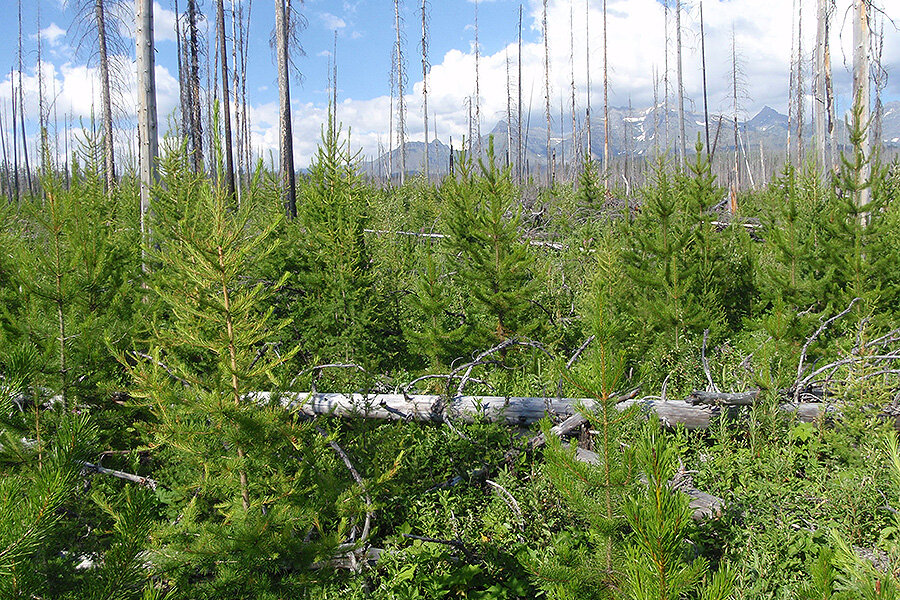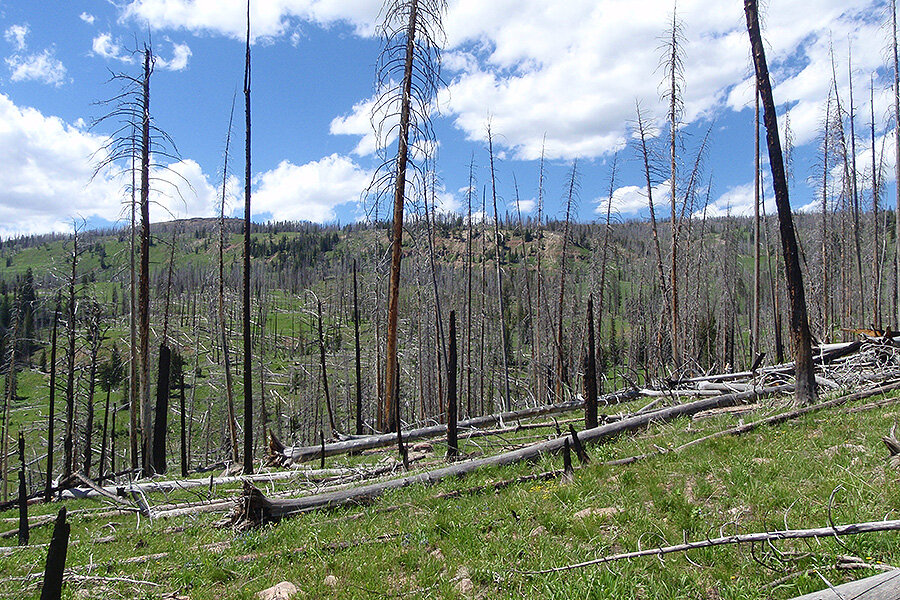Why US droughts spell trouble for forests after a fire
Loading...
Worsening droughts in the United States create a double threat for forest fires, according to climate researchers at the University of Wisconsin-Madison and the Washington State Department of Natural Resources.
With 14 percent of the contiguous US currently experiencing drought and climate change increasing the risk of severe forest fires, understanding the role drought plays in wildfire risk and forest recovery is becoming increasingly important.
Rocky Mountain forest fire sites are "the front lines of climate change," lead author Brian Harvey, now a postdoctoral Smith Fellow at the University of Colorado-Boulder, said in a UCB press release. He and coauthor Daniel Donato, now a natural resource scientist for the state of Washington, hope their research will help inform future forest management.
"This study is a crystal ball of sorts that helps us to see what forest recovery may look like in the future following severe fires," Harvey said. "These forests are well adapted to severe fires, but the net result of larger fires and warmer temperatures will likely be a decrease in tree density, a reduction in forest extent, and more forest patchiness in high-elevation areas."
The study could help land managers understand the importance of unburned "islands" near a forest fire site, learning to leave alone patches that could help restore burn areas. Other UWM researchers are also studying how much moisture various species need in order to germinate.
The study, published last week in Global Ecology and Biogeography, found hot conditions make it difficult for new seeds to take hold after a fire. Some species are particularly well-adapted: the seed cones of lodgepole pines, for example, release thousands of seeds when burned. Drier conditions make it hard for them to grow, however; that becomes even more difficult as the space widens between burned patches and plots that contain new seeds.
"From all the best available data and modeling, and expectations about future climate, these are the kinds of fires and post-fire climates that we’re going to see more of in the future," Dr. Harvey said in a UWM press release. The results could help researchers create more precise fire forest models, as well.
The research team visited 184 sites in the US Rockies that had experienced forest fires between 1994 and 2003, collecting data on the number, species, age, position, and size of trees, shrubs, and grasses to compare with the pre-fire conditions. They then studied climate records to learn about whether drought had impacted the area afterward, and how severely.
More seeds successfully grew under cooler, wetter conditions, and when burned patches were closer to non-burned areas, they found, particularly subalpine species like the Engelmann spruce and subalpine fir.
"We want to tease this apart so we can anticipate what the ecosystem services (like carbon storage and wildlife habitat) will be in the future, what the landscape will look like, what it means for people’s ability to recreate and where their communities are," she said. "There are a lot of human dimensions that come from the character and distribution of these forests."









